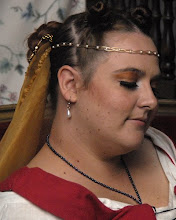Where the queen goes, her court must follow. The chaos that followed Elizabeth's summer progress prompted one historian to write, "Nothing save war was more disruptive to the orderly well-being of court life than a royal progress." Elizabeth went on progress each summer, to maintain contact with her people and to get out of London during plague season. When the Queen went on progress "she was not content to be accompanied by a mere handful of courtiers and ladies-in-waiting; she took along a great multitude and a large train of luggage, furnishings, food, and other suplies". Burghley tried to get the queen to limit the number of people she took on progress, but she was unwilling to compromise on the matter. To maintain the level of magnificence expected of her, she expected both her courtiers and her household to behave as though they were in residence at one of her palaces.
In 1553 a travel guide described France as being twenty-two days wide and nineteen days long. Another travel guide of the same period put the distance at sixteen days long. William Harrison's The Description of England, written in the 1580s, does not count days per se but he does list the distances between places and the implication is that the traveler might stop at each for a meal or for the night. "The way from Berwick to York, and so to London" is accomplished in twenty-two stops. London to Dover has another six stops.
On foot, one might travel three or four miles an hour during the day. Few people wanted to be out at night, so travel was confined to daylight hours. There were rivers to ford, however, and mountains to cross, so this was not a pace one could keep up indefinitely. Those who could, rode, either on horses or mules. The one hundred twenty mile journey from London to Stratford upon Avon took three days on horseback.
English gentlemen thought it unmanly to ride in any vehicle or on a mare. They used small, hard saddles and rated their horses by color, bay being the best. Women rode astride (using a man's saddle) or apillion. A pillion was a leather or padded cushion on a wooden frame which was strapped to the horse's back behind the saddle. A footboard hung from the offside and the woman clung to the man in front of her. By the sixteenth century, the sidesaddle was also an option. It was popularized by Catherine d' Medici, who brought one to France from Italy when she married the king of France in 1533.
There were some vehicles available. Wagons and carts had been around for a long time. Ladies might also be carried in litters. The coach, however, was a new development in sixteenth century England. A far cry from later developments, these coaches were an outgrowth of the carriages used to transport artillery. The first coaches had no springs or window glass and little padding. They differed from the four-wheeled carriages and covered wagons used earlier in that they were closed and had seats inside for passengers. One seat outside held the driver.
The first coach was brought to England from the Netherlands in 1555. The first coach in Scotland came from France with Mary, queen of Scots in 1561. Because of poor roads, the conveyance did not catch on outside London for some time.
The cleanest was to travel is by boat on the Thanes River. Usually, traveling by boat is faster than carriages or wagons. If you don’t have a boat, you would hail one by crying “Westward (or any other direction) Ho!” , A water taxi would cost about a penny.
To cross the English Channel (also called the Narrow Seas) to France could take days, even weeks, or in perfect weather conditions, only an afternoon.
One map giving travel times from Venice indicates that it took ten days to reach Augsburg, sixteen days to get to Brussels, and twenty-seven days to go all the way to London. Overland routes made use of rivers and canals.
Briggs, Asa, A Social History of England, Viking Press, New York, 1983
Loades, David, The Tudor Court, Barnes & Noble, New Jersey, 1987
Orlin, Lena Cowen, Elizabethan Households, Folger Shakespeare Library, 1995.
Somerset, Anne, Ladies in Waiting, from the Tudors to the Present Day, Alfred A. Knopf New York, 1984.
An Elizabethan Progress by Zillah Dovey (1996)
John Leland's Itinerary, edited by John Chandler (1993)
Subscribe to:
Post Comments (Atom)

No comments:
Post a Comment